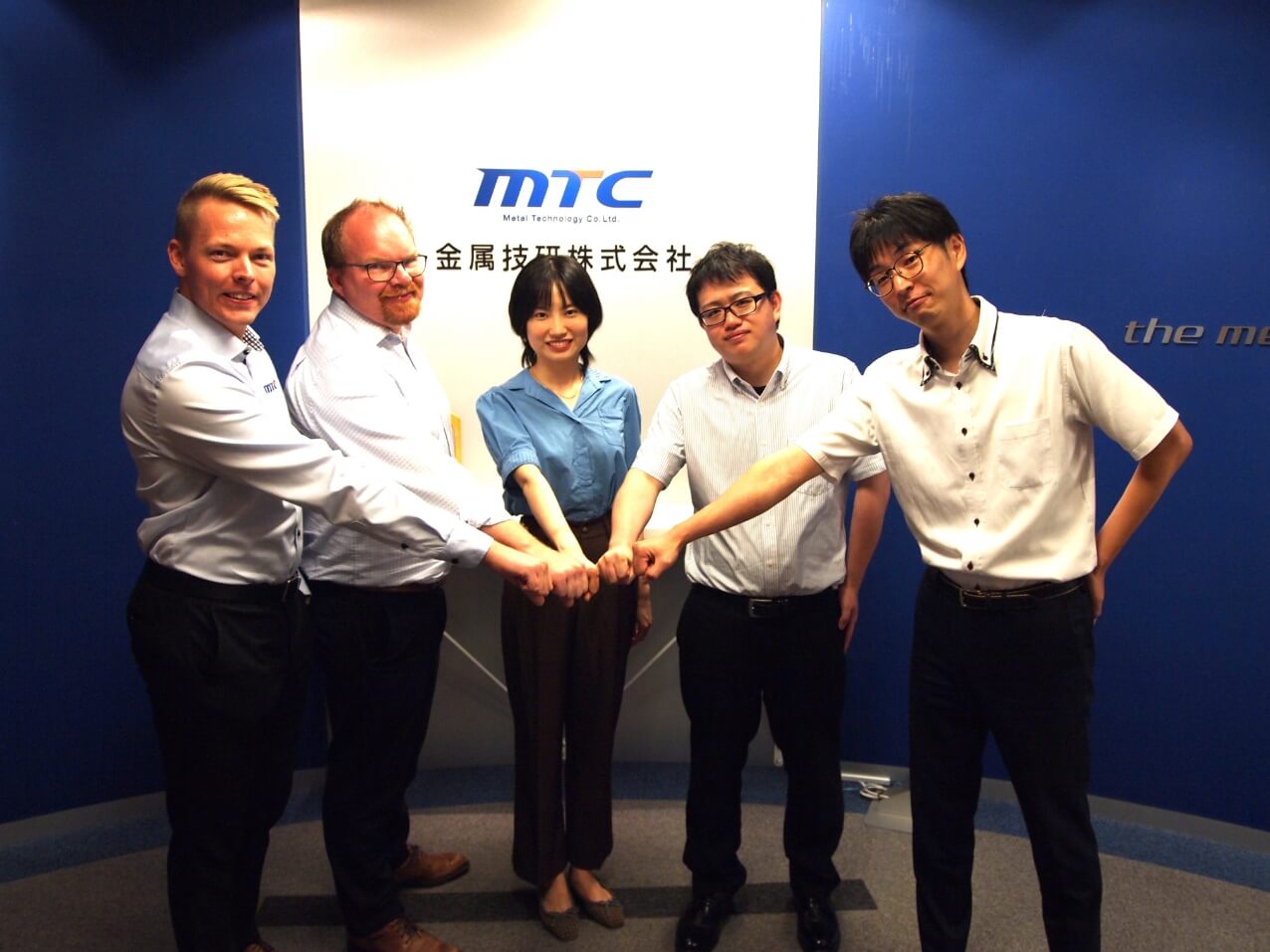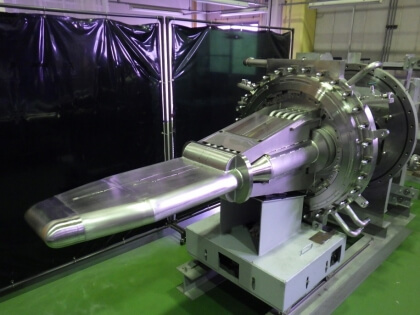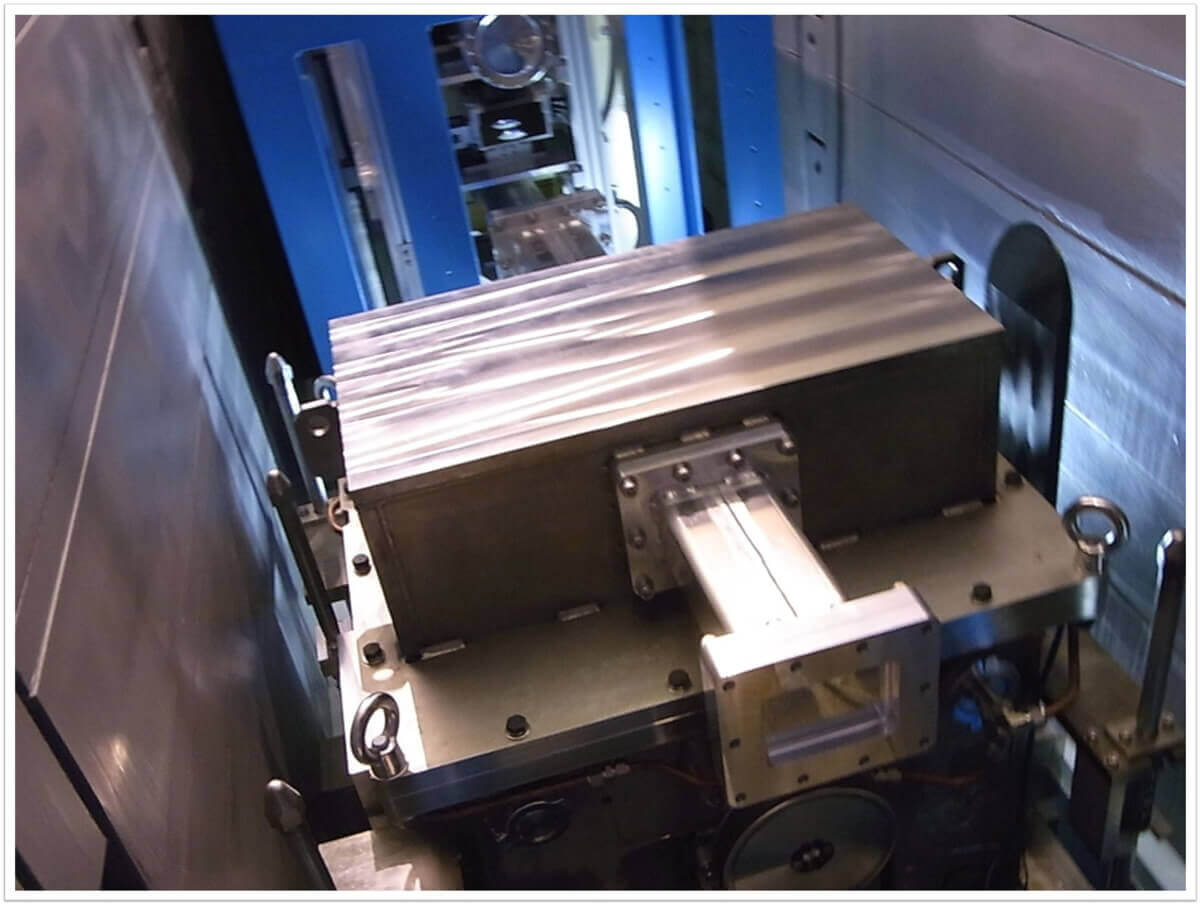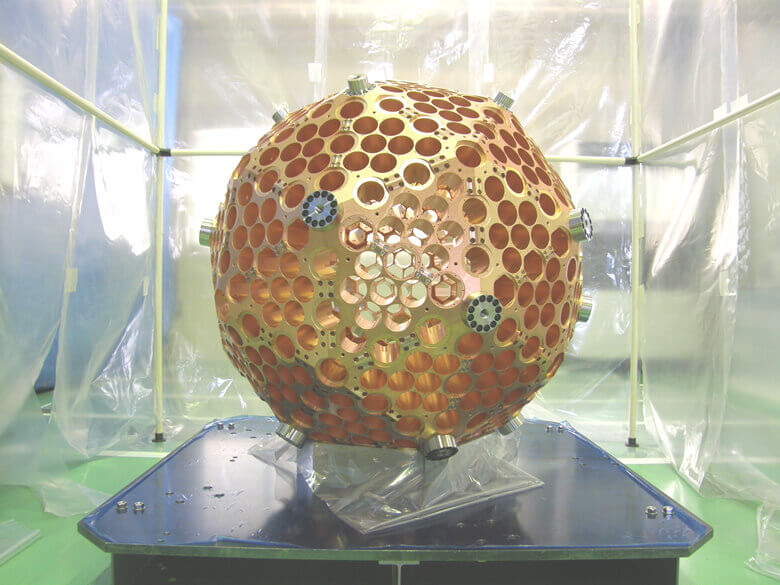MTC's sustainable approach: Near Net Shape & Additive Manufacturing

【Discussion member】
■Jimmy Bovin [Sales & Marketing Manager, MTC Powder Solutions AB]
■Tomas Berglund [R&D Manager, MTC Powder Solutions AB]
■Yueyao Zhang [Sales Division, Metal Technology Co. Ltd.]
■Sosuke Sasaki [Assistant Section Chief, Technical Section, Himeji Plant, Metal Technology Co. Ltd.]
■Hiroshige Masuo [Section Manager, R&D Department, Metal Technology Co. Ltd.]
Manufacturers play a vital role in achieving sustainability goals, decarbonization, and reducing environmental impact. Metal Technology Co. Ltd. (MTC) operates in various sectors such as semiconductors, energy, and aerospace, with a strong focus on 'material-reduction' to directly mitigate environmental effects. Yueyao Zhang, part of MTC's sales division, engaged in discussions with key personnel, including Mr. Hiroshige Masuo, Manager of the Technical Section at the Technical Center, Mr. Sosuke Sasaki from the Himeji Plant's Technical Section, and representatives from our Swedish subsidiary, MTC Powder Solutions (MTC-PS), namely Tomas Berglund, R&D Manager, and Mr. Jimmy Bovin, Sales & Marketing Manager.
Zhang Let's start by introducing ourselves. I work in MTC's sales division. I am mainly in overseas sales.
Jimmy I am the manager for Sales & Marketing, and I have been working at MTC-PS for over five years. I studied mechanical engineering and previously worked in the Norwegian energy sector both in the field of engineering and sales.
Tomas I am the R&D Manager at MTC-PS and have been working with the company for over 11 years. In that time I have been involved in various projects and roles. I have mostly focused on hot isostatic pressing (HIP). I was also involved in HIP before joining MTC-PS.
Masuo I joined MTC in 2007 and have been working here for 16 years. I have been working as an engineer on metal additive manufacturing for ten years. We successfully combine various techniques with AM, including HIP, which we then propose to our customers.
Sasaki This is my 9th year having joined the company in 2015. Since joining the company, I have been working in our technical division. Mainly focused on manufacturing near net shape (NNS) components using HIP. In particular, we have been frequently collaborating with MTC-PS in recent years.
 About NNS
About NNS
Empowering Progress: MTC's Evolutionary Strength through Technological Fusion
Zhang Could you tell us about MTC-PS’s business and strengths?
Jimmy MTC-PS was the first company in the world to commercialize NNS using HIP and has been supplying products/materials for more than 30 years. MTC-PS areas of business are increasing due to high demand from critical industries such as fusion, big science and nuclear.

Zhang MTC-PS has succeeded in commercializing NNS. Mr. Sasaki, please explain HIP, which is the core technology of the entire group.
Sasaki HIP, hot isostatic pressing, is a process in which metal powder is sintered and consolidated by applying pressure and heat at high temperatures and pressures, creating 100% dense materials with no pores and weaknesses. HIP can also be used to remove imperfections in conventional manufacturing technologies such as castings and to join dissimilar materials to create unique material combinations. We can add value to our customer’s products resulting in higher quality.
Transformative Impact: NNS Redefining Costs, Materials, and Innovation
Zhang Could you please explain NNS?
Sasaki NNS or near net shape, is the consolidation of powder metals in a capsule. This is done to achieve a 100% dense material which is in a shape close in dimension to the final product. Compared with traditional techniques, this greatly reduces the machining required which in turn allows for lower costs, risks and lead time. We have shown that material savings of 30-40% can be achieved.
Jimmy There are three important points to consider regarding NNS. First, as Mr. Sasaki pointed out, reducing the amount of material, due to the manufacturing technology’s ability to produce raw material closer to the finished product, will lead to a reduction in the environmental impact.
Secondly, when making large components with conventional manufacturing technologies such as forgings welding is often required to combine various parts, but due to the ability to produce complex shapes using NNS we can often remove the need for welding. Since there are no welds, customers often use this technique because it offers higher quality and safety for critical parts.
Another advantage of NNS is the ability to combine multiple materials on the same part. We see many parts that have different material requirements on different locations on the same part and with conventional manufacturing technologies customers often need to choose one material which is the best compromise, unfortunately resulting in lower performance. With NNS and its ability to combine various materials performance can often be increased as no compromises is needed on the material selection on various locations on the same part. If one area requires high corrosion resistance while another area requires high wear resistance both materials can be combined using NNS increasing the lifetime of the part.
Tomas There are additional important factors to consider. For example, in the case of forging, the material properties differ in various locations throughout the part which becomes evident during destructive testing. NNS HIP eliminates these issues as the materials will be 100% isotropic meaning that material properties are equal in all directions throughout the entire part.
Sasaki If you use HIP, you will be able to produce a more uniform material than forged.
Tomas This is also an important consideration for our customers. Extremely clean powders prevent foreign matter and defects from entering the product, ensuring high quality and stable functionality.
Jimmy Since NNS produced materials can achieve longer lifetimes the materials are often found in applications where replacement is difficult, such as in the oil and gas industry on the seafloor, or in applications where the integrity of the materials is essential for the function of a plant, such in the nuclear industry on critical piping.
Tomas In addition, the materials that can be utilized by forging is limited. As HIP uses powder, new materials can be produced that was not possible with conventional manufacturing technologies.
Sasaki In recent years, there has been an increase in the number of large parts. NNS offers better quality control resulting in less parts requiring replacement, lowering costs while increasing sustainability.
Zhang Could you please give us some examples of the real-world benefits to NNS?
Jimmy We have supplied a 70-centimeter part called an endcap, which was supplied to a Big Science facility in Europe. There were many nozzles in the part before, which were welded in the past, but can now be made as one unit with NNS. As this is a high vacuum application the welding made in the past was treated as a risk as it was difficult to pass the helium leak testing. However, NNS eliminates these welds which eliminates the leaks. The higher the number of welds, the greater the risk. Making all of these with NNS has reduced the risk associated with welding and has resulted in higher levels of uniformity and quality. Currently, the parts have been in operation for about 20 years in one of the largest big science facilities in the world.
Metal additive manufacturing: a new near net shape technology. Combining with HIP for New Deployments
How about - Crafting Innovation: NNS Components and Additive Manufacturing growing technologies for the future.
Zhang MTC has a long history in metal additive manufacturing in Japan. Please tell us about your latest achievements.
Masuo We began full-scale metal additive manufacturing in 2013. We are probably the oldest company in Japan, and there are not many companies that are still operating today. Customers are from a variety of manufacturers and industries. Inquiries from customers in the space, liquid crystal semiconductor, and energy industries are increasing. In addition, the percentage of customers who require mass production and high quality rather than trial production has increased considerably.
Initially, near net shape refers to a method of forming a shape that does not require a lot of processing after forming, but closely resembles the shape of the finished product. In addition to the powder-sintered near net shape (NNS) using HIP, additive manufacturing is also a near-net-shape method in that it is made into a shape similar to a finished product. However, metal additive manufacturing can only produce relatively small parts due to the size of the equipment. MTC can select NNS HIP for large items where it’s essential that no pores and weaknesses are found in the materials and metal additive manufacturing for small items.
Zhang It’s about combining the strengths of NNS and AM.
Jimmy I have the same thoughts. We believe that the technologies are complementary; NNS HIP can be used on critical larger parts where material integrity is essential, and AM can be used on smaller parts with extremely complicated geometries.
Creating new products by offering world-class NNS components and combining them with additive manufacturing techniques
How about - Fueling Future Growth: Standardization for NNS and Additive Manufacturing
Zhang What is the current strategy or plan for collaborating between MTC and MTC-PS?
Sasaki MTC-PS has advanced skills in making capsules for NNS, while Himeji Plant has the largest HIP equipment in the world, the Giga HIP. For projects in the 3- and 4-meter range where HIP is not possible in Europe, we process these large NNS parts at the Himeji Plant after receiving the powder filled capsules from MTC-PS. Naturally, we are also working on other forms of collaboration, involving a variety of technologies.
 Giga-HIP
Giga-HIP
Zhang Please tell us about the challenges for further growth.
Jimmy The biggest challenge is to create awareness of HIP to potential customers. Although HIP is not a new technique, how to use it is not well understood and what benefits it can deliver. I am getting this message to the customers on the benefits of HIP and the materials that we can use. Recently, metal additive manufacturing has gained in popularity, so NNS HIP is benefitting from this interest. Additive manufacturing and HIP are techniques that allow us to go beyond the limitations of forgings and castings. However, there is a need to be knowledgeable about design for NNS to get all its advantages implemented already at design stage.
Tomas The lack of standards in some new industries is also a challenge. As forgings have established standards, we need to work diligently to make sure that HIP and NNS standards are also in place.
 Complex flow path fabricated using additive manufacturing
Complex flow path fabricated using additive manufacturing
Masuo NNS, HIP, and additive manufacturing have their strengths and weaknesses, so I think the possibilities will expand if they are combined properly. There are not many manufacturers that can do these processes, so there is no standard that everyone can follow. However, the number of customers who wish to use this product has recently begun to increase. It is necessary to increase the speed at which standards are created. We are currently working toward the standardization of additive manufacturing. and in NNS we do the same, demand may increase even further. I plan to promote the sales of AM and NNS for this year.
Zhang Integration of technology expands business opportunities.
Masuo I would like as many people as possible in Japan to realize that when the cost balance is not right for additive manufacturing and you want to switch to NNS, you can get the benefits of this type of component. As understanding progresses, I believe we will be able to do more work on a larger scale than we are doing now.
Zhang I am looking forward to seeing how NNS will develop even further in the future. Thank you very much for your time today.






